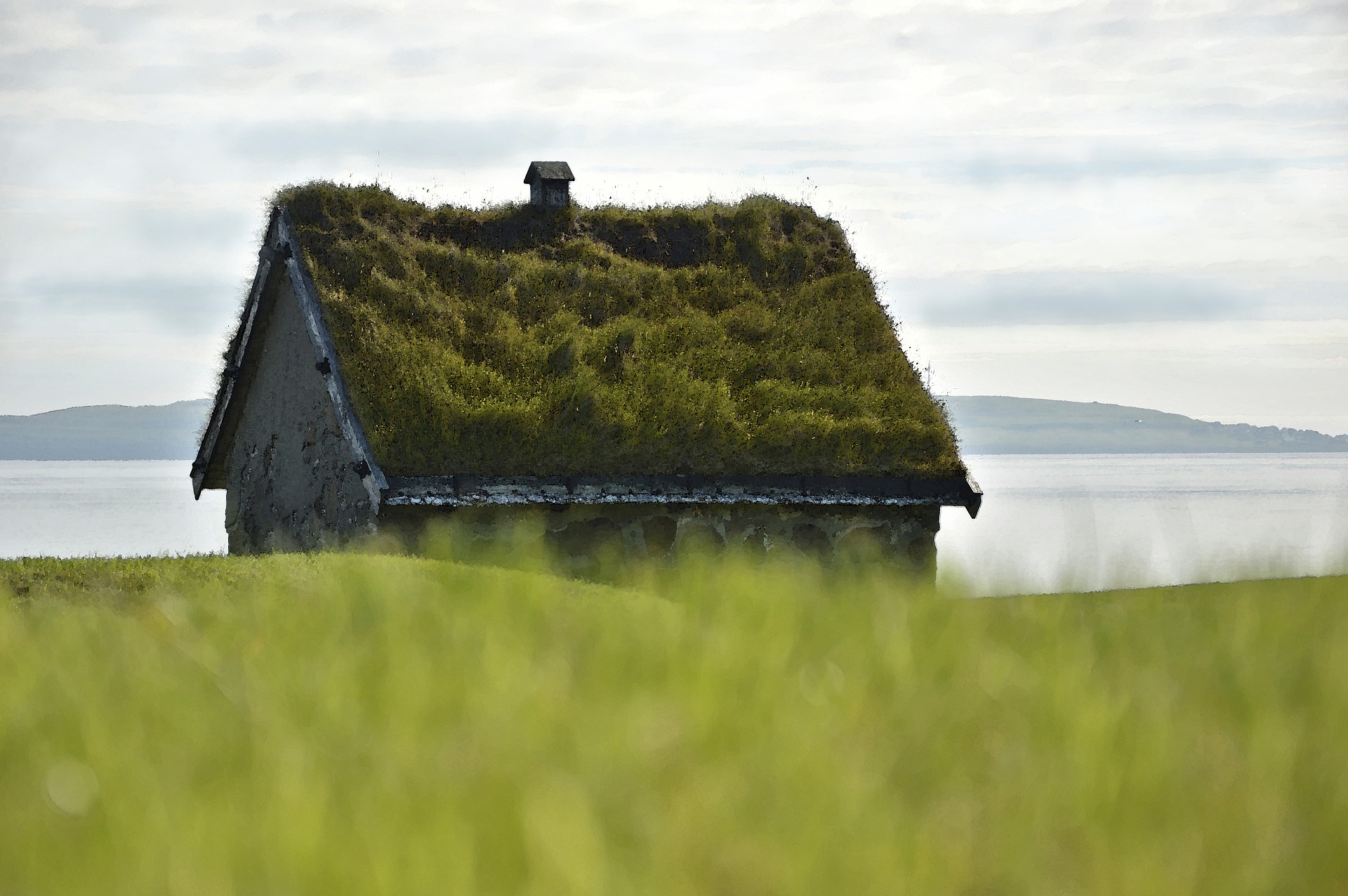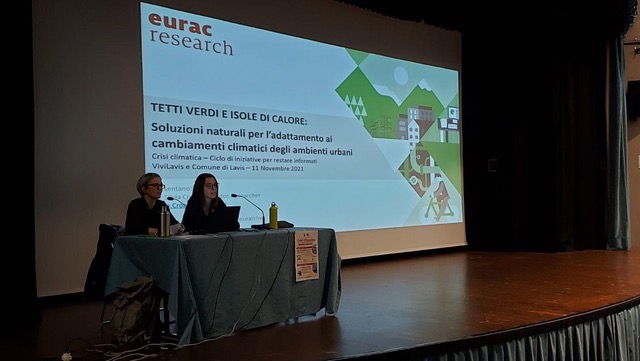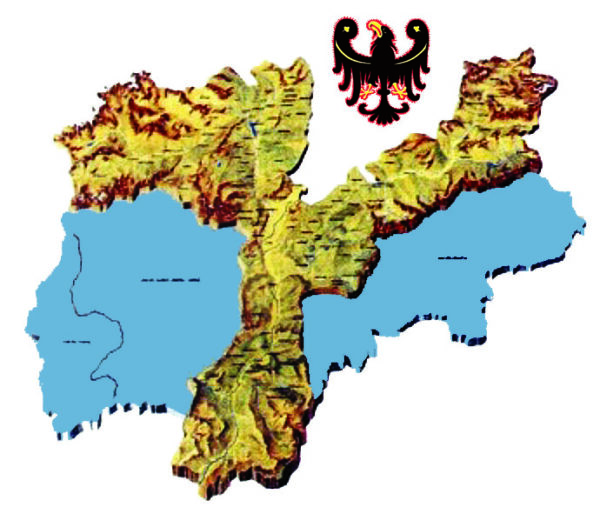November 19, 2021

On November 11, the auditorium of Lavis (Trentino, Italy) housed a conference on possible solutions to reduce the environmental impact of urban buildings, including green rooftops.
The initiative was organized in two sections. The first was mainly dedicated to urban greening experts and consisted of a technical lecture by Helga Salchegger of the Laimburg Research Center [1]. Salchegger described the steps for constructing green rooftops and explained which structural and static factors must be considered, which types of green roofs are already applied (extensive and intensive), and what benefits they bring. They are beneficial both for rainwater retention and building insulation (thermal and acoustic), but particularly for environmental purposes. The latest ongoing studies aim to set up green roofs that maximize biodiversity, mixing internsive and extensive roof greening methods, adding taller plants, boulders, non-vegetated areas, gravel knolls (where wild bees can nest) and logs (which provide food and shelter for various insects). The studies have shown that for many species, green rooftops can be an undisturbed oasis in the concrete ocean of highly urbanized cities.
In the second conference section, open to the whole community, Eurac researchers Silvia Croce and Sonja Gantioler presented their study on the possibility to increase the total urban green surface by exploiting the rooftops in Bolzano South [2]: a “concrete-sealed” industrial district of the size of approximately one third of the city. The two researchers first described the main problem in highly urbanized areas: the temperature rise caused by both the heat absorption (and return) of artificial surfaces, and poor ventilation in dense build-up areas. This can then generate the so-called heat islands.
In areas affected by heat island effect, the average temperature can be up to 1 °C higher than the average temperature in the surrouning areas.

Fig. 1: Eurac Researchers Sonja Gantioler (left) and Silvia Croce (right) during their presentation.
Can green rooftops and hanging gardens reduce the heat island effect and air pollution concentration level? What do plants, shrubs and grasses do?
1. They absorb solar radiation and polluting gases (nitrogen dioxide)
2. They stop particulate matter and fix carbon dioxide in the soil
3. They retain and slow down the damaging effects of heavy rainfall
4. Thanks to evapotranspiration, they have a cooling effect, which can be of some valuable degrees.
5. Even though it is rarely know, they can improve the performance of solar and photovoltaic panels (the reason is related to the optimal operating temperature range of the panels).
Several times the two speakers repeated that green rooftops are an extreme form of nature: they cannot be seen as a definitive but rather partial solution against high-urbanization. Green areas on the actual ground should always be prioritized in sustainable urban develompent plans. Given its importance in absorbing water, fixing carbon dioxide and housing biodiversity, the care of our soil must not be overlooked.
Another factor that must not be forgotten is the type of material used to create green rooftops. To insulate, retain and drain water plastic is typically adopted. The problem of how to dispose it in the future then arises.
All in all, the conference showed several points of interest for our territory both for the adopted methodology and for the suggested solutions. In the end, a greater attention to the quality of the environment means that the relationship between man and nature is healthy and properly managed.
Bibliography:
[1] Abram, Paolo and Salchegger, Helga (2017) Il verde pensile : tra tecnica e natura. Architettura, ingegneria e ambiente . Legislazione tecnica, Roma. ISBN 978-88-6219-237-8
[2] Silvia Croce et al (2019) A Systemic Approach for the Optimization of Urban Surfaces Usage IOP Conf. Ser.: Earth Environ. Sci. 290 012113
This article is part of the project “Environmental Blogging Boost 4 Students”, aimed at increasing the spread of agroecology and sustainable water management in Trentino. The project is financed by the BIM Adige Water Catchments Consortium (grant approved by provision n. 100 of June 06, 2021).




